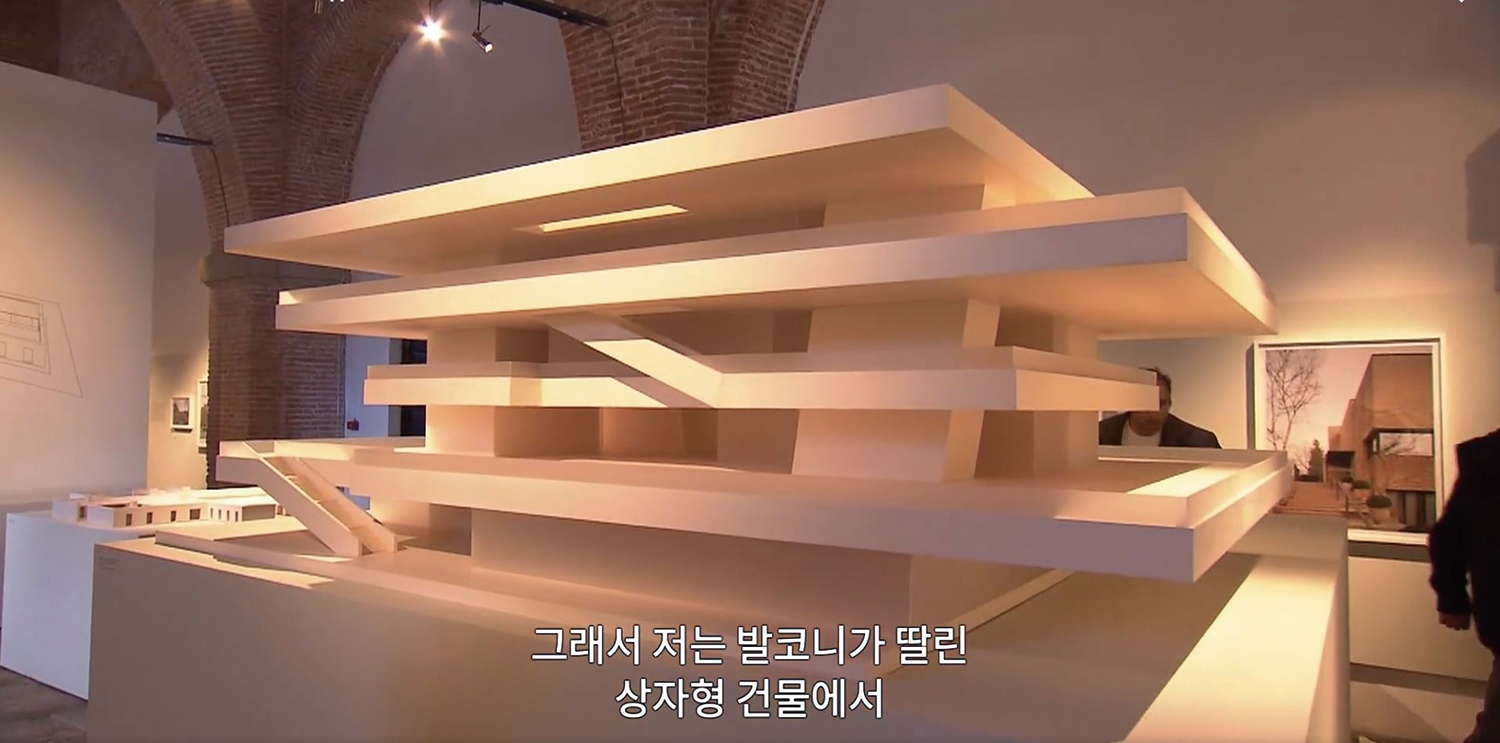SPACE October 2023 (No. 671)


‘데이비드 치퍼필드: 형태와 물질’(2012) 스틸컷 / Screenshots from NAVER TV
On Sep. 10, David Chipperfield: Form Matters (2012), a film about this year’s Pritzker Architecture Prize winner, screened at the 15th Seoul International Architecture Film Festival. The movie is shown as part of ‘Form Matters’ (2010, Italy Pisa), an exhibition of David Chipperfield’s work. The exhibition consists of exterior drawings with monochromatic lines and architectural photographs that focus on specific parts, highlighting form, material, and detail, while the film follows Chipperfield as he walks through the exhibition and explains his work. He points out the gabled roof in front of the exterior drawing of the River and Rowing Museum (1997) and the concealment of functional elements like downpipes in architectural photographs. He says he wanted to bring in traditional forms and finish them off with minimalist details to create a modern structure that would fit into the neighbourhood. The other example of adopting forms from the neighbourhood and past includes the Museum Folkwang (2009). He focuses on the relationship between form and behaviour while explaining the BBC Scotland Headquarters (2007) and the Americaʼs Cup Building (2006) covered in the film.
After the movie, there was a GV (guest visit) by Jeon Youchang (professor, Ajou University). Titled ‘Between Geometry and Delicacy’, began with an image of the Barcelona Pavilion (1929), where all the building materials were painted white. The idea was to demonstrate how the impression of the building changes when the sensation of glass, travertine, among other elements are removed. Next, he introduced Chipperfieldʼs Museum of Modern Literature (2006). The exterior of the Museum of Modern Literature is a colonnade of rectangular columns, the reinterpretation of a loggia. The exterior uses a combination of gray concrete, off-white limestone, and yellow wood materials to complement the simplicity of the colonnade, while Chipperfieldʼs distinctive details offer a minimalist look. He wanted to illustrate that by properly balancing the materiality of the materials and achieving harmony between the part and the whole, it is possible to draw upon the language of classical colonnades and end up with a building that still has a contemporary expression.
Meanwhile, the festival, which ended on Sep. 17, was available on Art House MOMO and NAVER TV with 33 films across four themed sections. The sections included ‘Masters & Masterpieces’, which highlighted 10 Pritzker Architecture Prize winning architects (teams), including Sejima Kazuyo and Peter Zumthor, along with Chipperfield; ‘Special Section – Hanok, New Wave’, which featured films set in hanok; ‘Urbanscape’, which explored the relationship between cities and architecture; and ‘Beyond – Dancing Architecture’, which featured dance films based on the interpretation of space.





